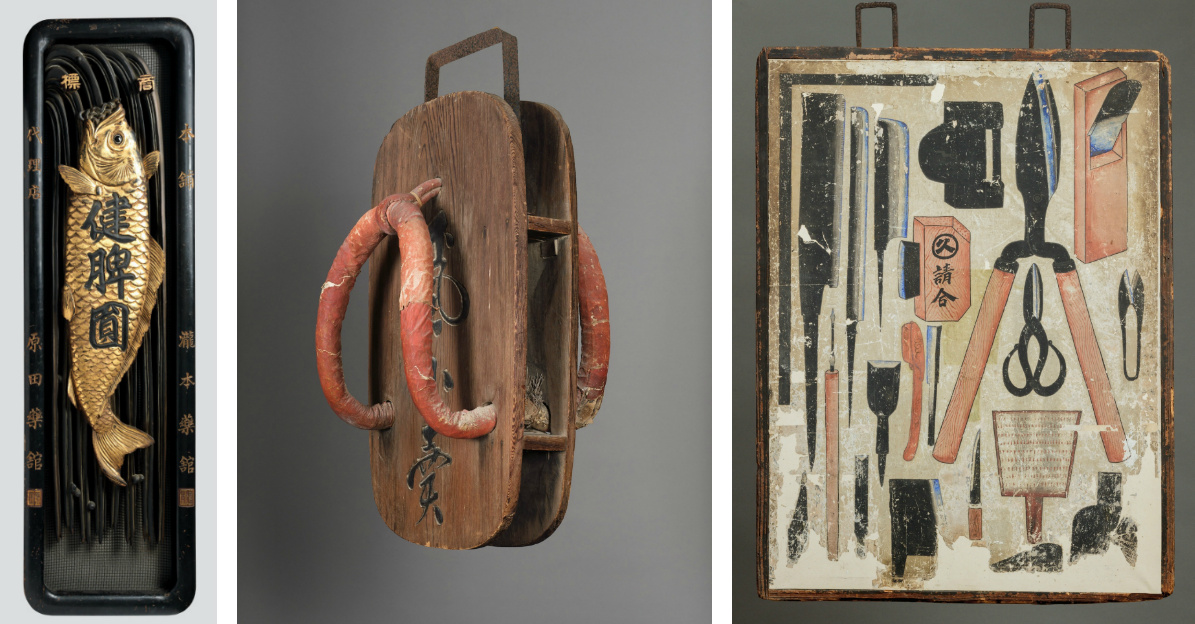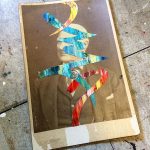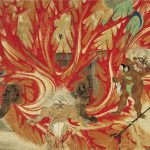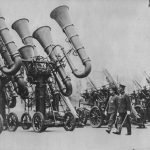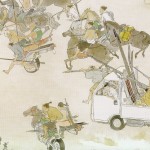Before department stores and convenient stores became one-stop shopping destinations, a highly fragmented industry of local, family run shops thrived throughout Japan. And to advertise their business, merchants would frequently spend significant sums of money on kanban: signs that would be displayed prominently outside the shop that would convey prestige and reliability to customers.
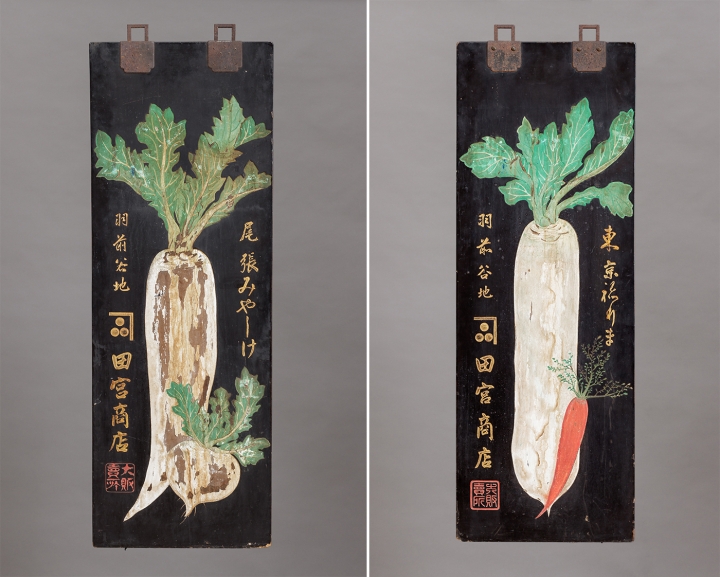
The front and back of a kanban for a greengrocer (late 19th century). It features large daikon radishes as its primary advertising image
To create what was essentially a form of traditional advertising , merchants would hire skilled craftsman known as kanban-shi who would hand-carve the signs using wood, bamboo, iron, fabric and sometimes even stone. The kanban typically took on an enlarged shape or form of whatever the merchant was dealing in. And the images were often accompanied by elegant calligraphy.
Kanban is currently viewable in the form of an exhibition at the Mingei International Museum in San Diego. And you can see more pictures from the exhibition on Hyperallergic. Kanban was also released in the form of a book – a “176-page hardbound publication by Guest Curator Alan Scott Pate, with 155 illustrations and over 50 kanban represented.” It’s available here for $49.50.
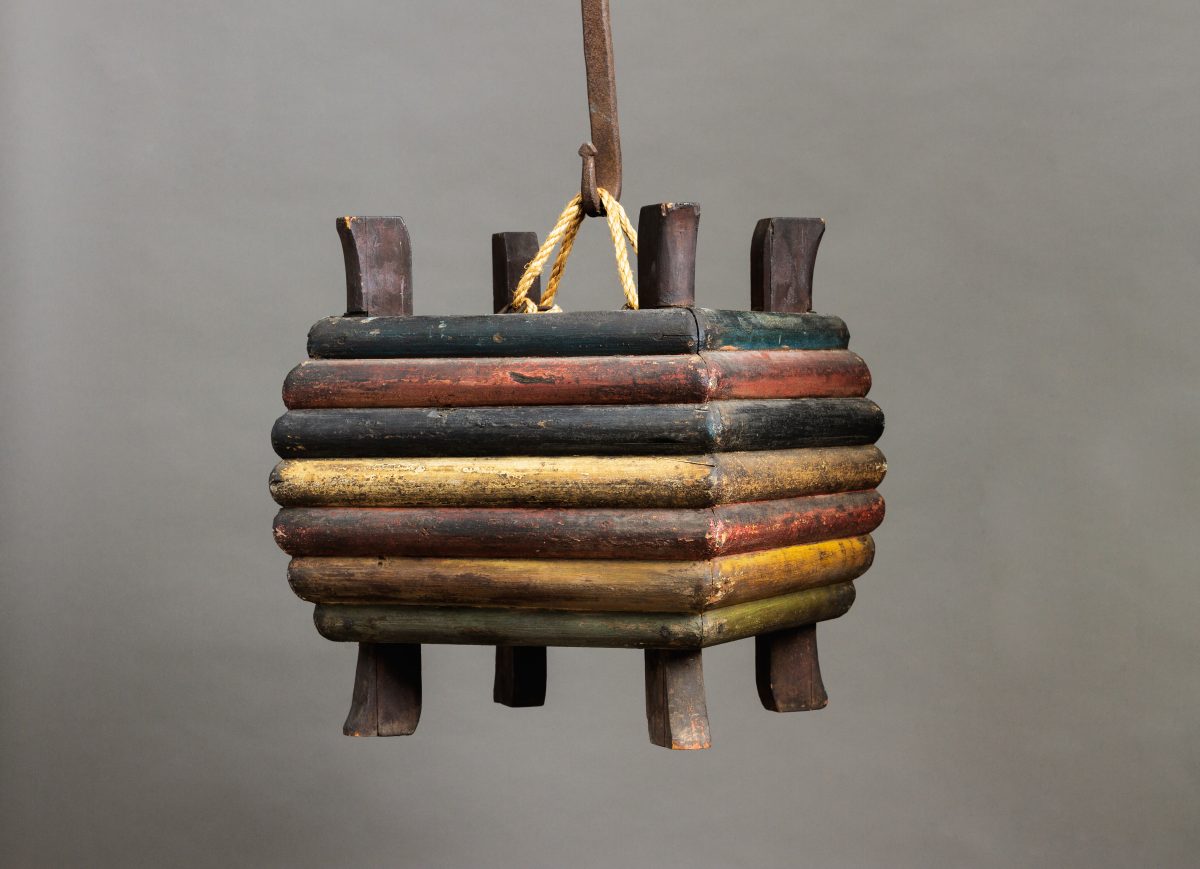
Kanban for Thread Shop (19th century). This kanban depicts an oversize ito waku or skein with seven bands of colored thread to advertise a thread shop.
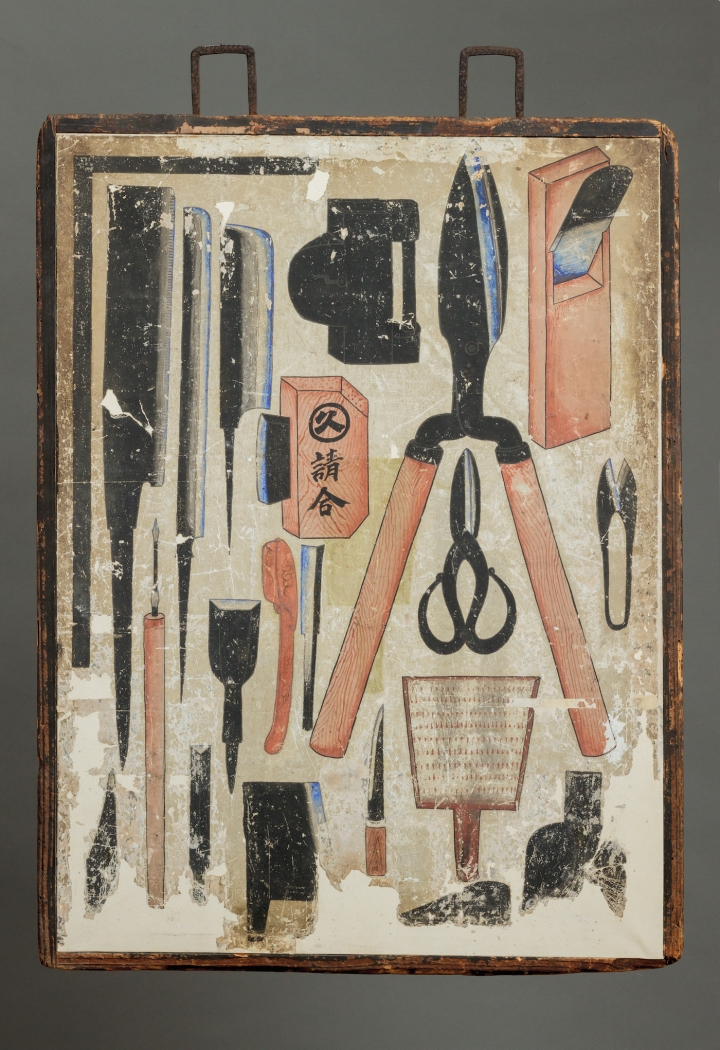
Kanban for a blade shop (late 19th century). Exceptionally fashioned out of thick paper set in a wooden frame, this kanban presents approximately forty finely painted types of hand tools and blades
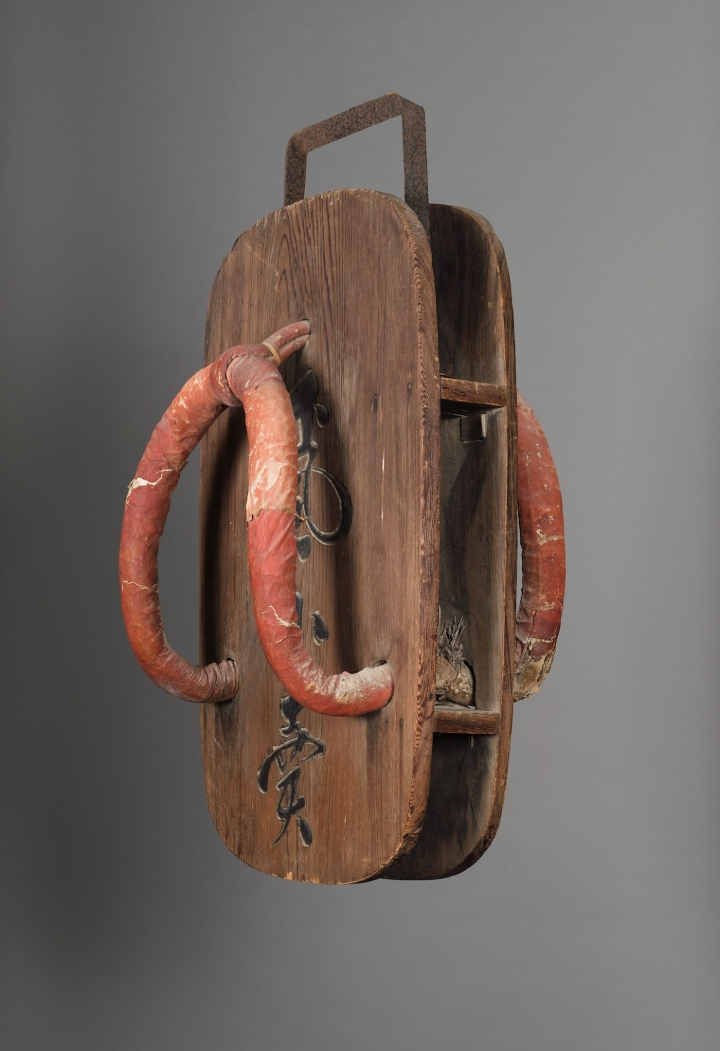
Kanban for a geta, or wooden sandal, shop (l19 century). The kanban-shi recreated an oversized geta.
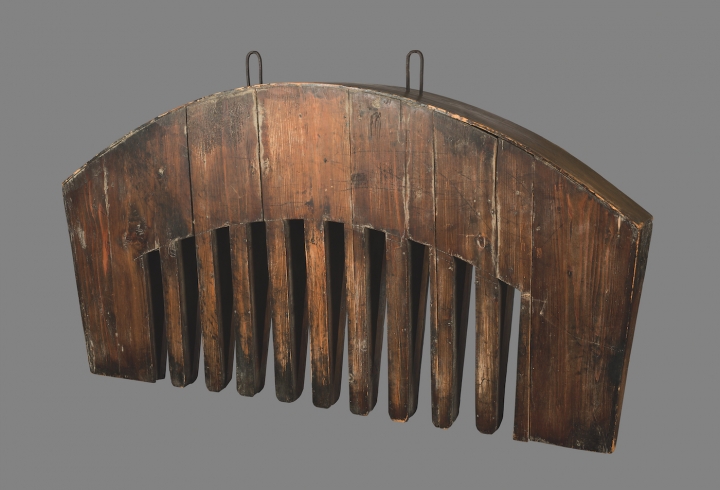
a kanban for a comb shop (19th century)
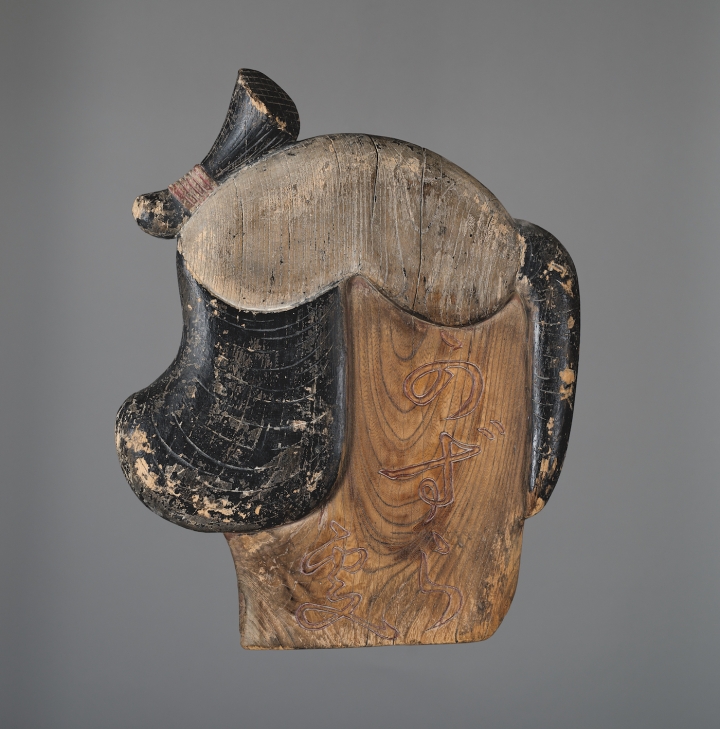
a kanban for a wig shop (19th century)
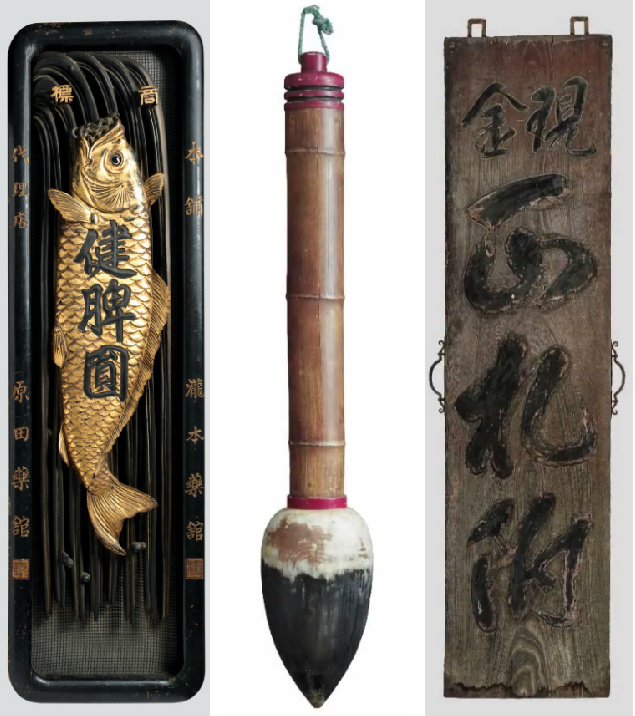
from left to right: kanban for a pharmacy, a brush shop and dry goods store with “fair pricing” slogan
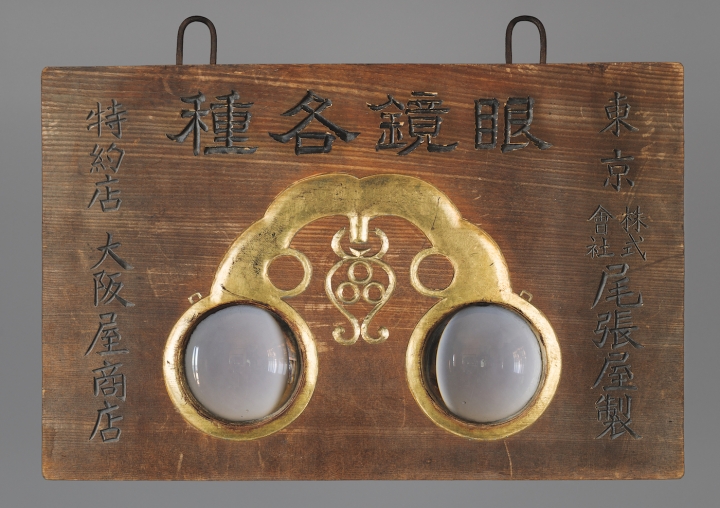
a kanban for eyeglass shop (early 20th century)

